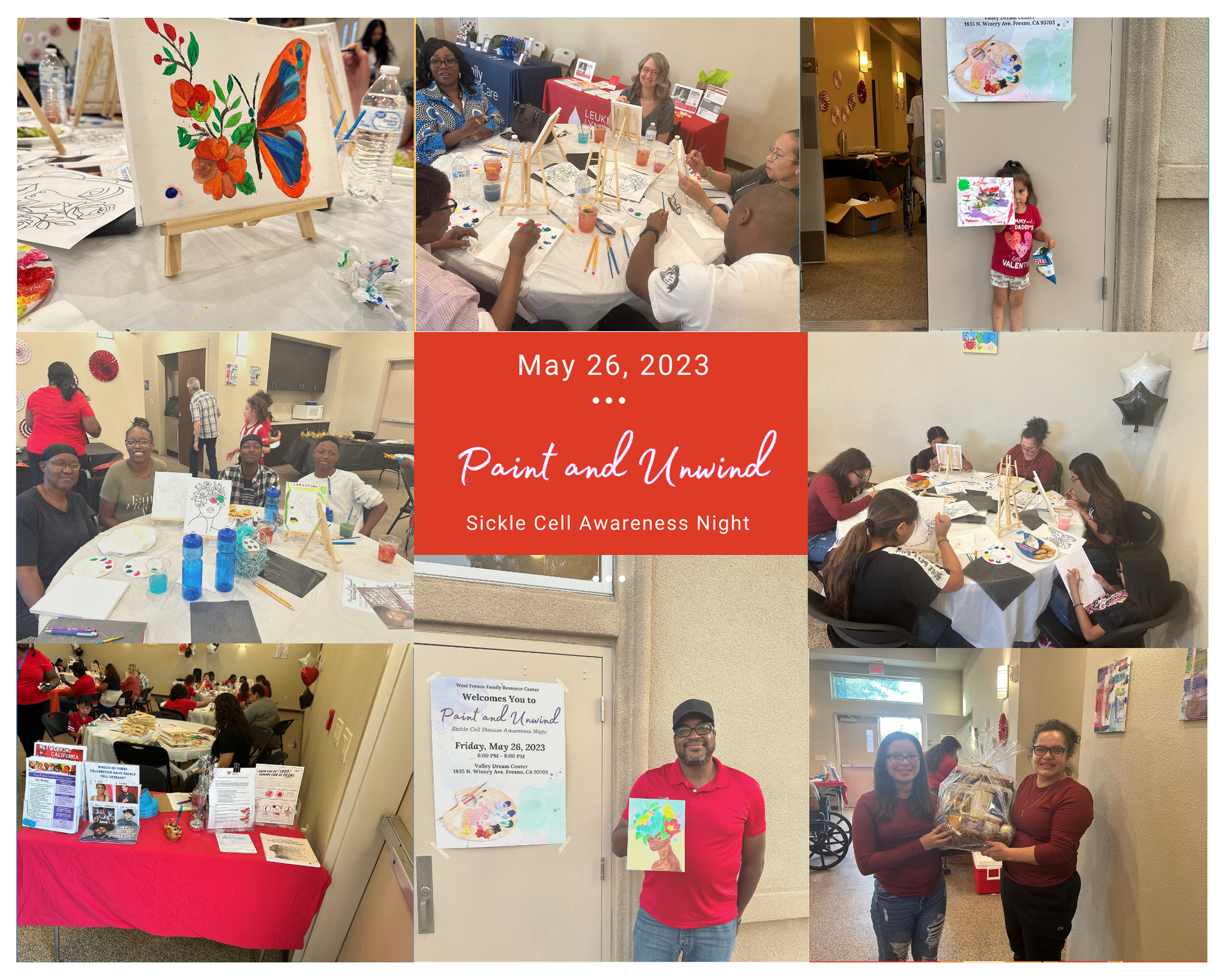Networking California for Sickle Cell
Sickle Cell Disease Foundation in collaboration with West Fresno Family Resource Center is to provide service in Fresno County, CA in an effort to increase the number of patients with access to care. WFFRC through collaboration within the region will identify persons with SCD lost to care. WFFRC will focus on educating the community in your local area and to propose successful collaboratives with healthcare teams to improve patient outcomes, transition, and quality of life.
2023 Events
Paint and Unwind
Sickle Cell Awareness Night
On Friday, May 26, 2023, West Fresno Family Resource Center's NCSCC program staff hosted a community event called "Paint and Unwind." The event featured a paint night for program participants and the community. Included in paint night, WFFRC provided "self-care" raffle prizes, refreshments, vendors, sickle cell disease and trait educational material, program information, and highlighted additional resources offered by the organization. The purpose of the event was to provide a relaxing, self-care experience for program participants and their families. Many were thrilled and pleased to attend and requested more events in the future. WFFRC is excitedly working on additional events to occur in the remainder of the year.
Our Intake and assessment process is used to build a therapeutic relationship between our support staff and those affected by sickle cell to address your needs. Resources are recommended based on your individual circumstance.
To begin your intake process, contact Toni Wilson via email at twilson@wfresnofrc.org or by phone at (559) 621-2967
or (559) 981-1783 work cell phone.
About Sickle Cell Anemia
What Is Sickle Cell?
Sickle cell disease is an inherited genetic disorder that affects hemoglobin in red blood cells. Hemoglobin is a protein that carries oxygen to all parts of the body. With sickle cell disease, red blood cells assume a sickle shape which causes the cells to clog in the vessels.
This can lead to severe pain and tissue damage.
This disease is debilitating and patients die on average in their 40s. Health care for people with SCD is barely adequate and that is another one of our many challenges.
Sickle cell disease affects millions of people throughout the world and is particularly common among those whose ancestor's came from sub-Saharan Africa; Spanish speaking regions in the Western Hemisphere (South America, the Caribbean, and Central America); Saudi Arabia; India; and Mediterranean countries such as Turkey, Greece and Italy. Americans live with sickle cell disease—a serious disease that causes sever pain, organ damage, strokes and life threatening infections—struggle to get the health care, social services and treatments they need to manage their condition.
People living with SCD have less access to comprehensive team care than people with genetic disorders such as hemophilia and cystic fibrosis. There is uneven availability and utilization of multidisciplinary specialty clinics for different genetic diseases For two disorders (ie hemophilia and cystic fibrosis), effective national networks of specialty clinics exist and reach large proportions of the target populations.
For other disorders, notably sickle cell disease, fewer such centers are available. Models of joint management are essential to promote ongoing communications and coordination between patient and the healthcare provider particularly during the transition from pediatric care to adult care.







